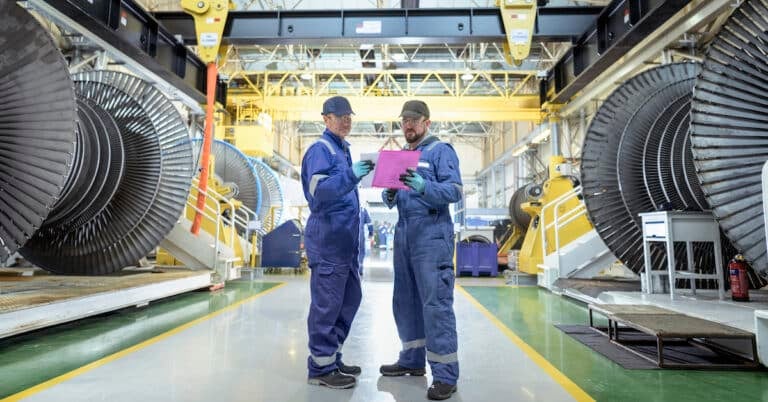Operator-driven reliability (ODR) is a methodology for sustaining reliability through the proactive involvement of maintenance and operations personnel. ODR focuses on the organization’s ability to respond quickly and effectively to equipment failures and disruptions. By empowering operators to take ownership of their equipment, ODR can help improve plant reliability and minimize unplanned downtime. Implementing this strategy can be a challenge, but with the help of the right tools and resources, it can be a valuable addition to your maintenance program. In this blog post, we’ll discuss what ODR is and how you can go about adopting it in your organization. We’ll also provide some tips on getting started and recommended resources for further reading.
What is Operator-Driven Reliability?
In operator-driven reliability, the operator undergoes training to take more responsibility for equipment maintenance and drive reliability. As opposed to other maintenance methods, ODR spreads the responsibilities across more team members than just the maintenance technicians. Despite its challenges, this can improve the overall reliability of your assets.
How you maintain your vehicle is a prime example of operator-driven reliability. You, the owner, not your mechanic, will be the first to know if something is wrong. The mechanic doesn’t drive your car every day, meaning they can’t possibly notice the onset of problems. However, they will know to diagnose and correct them. You are accountable for identifying issues, and your mechanic is simply responsible for resolving them.
Benefits of Operator-Driven Reliability
Without basic operator care, studies have found that you will lose out on 33% of your asset improvement opportunities. According to Penn State Applied Research Lab, improved physical asset management could save North American industries $200 billion to $500 billion annually. Through this process, businesses can increase their profits by eliminating gaps between their current and potential performance.
Problems are most likely to be detected by those who operate physical assets. Moreover, the way facilities operate their equipment is directly responsible for 25-40% of maintenance failures. The way your equipment is started, shut down, and changed over affects its reliability. By improving operator knowledge and responsibility in these areas, you decrease downtime, reduce equipment breakdowns, detect issues earlier, and lower maintenance costs.
Tips for Implementing Operator-Driven Reliability
Go Beyond Inspections or Meter Reading
Developing a successful operator-driven reliability program involves more than asking operators to inspect their equipment. Getting operators to understand machinery is the key to implementing operator-driven reliability. Although most people understand how to use equipment, they are not able to recognize many warning signs of problems. Nevertheless, most organizations fail to adequately teach operators basic maintenance troubleshooting techniques. Insufficient understanding of how warning signs lead to failures causes the system to break down. If you shift your perspective to be bigger than meter reading or valve turning, then you will have knowledgeable workers with eyes on your machinery every day.
Start with Training
In most cases, training operators in-house by pairing them with repair and maintenance technicians is enough to motivate operators to be accountable. By educating them about the symptoms of a machine breakdown before it occurs, for example, you can begin impacting downtime in a major way. Additionally, operators may be able to predict issues such as offset calibration better if they utilize operator expertise along with a mechanical understanding of machinery. To avoid negative business impacts, operators must troubleshoot and correct problems quickly. Training operators effectively and continuously is crucial to ensuring they are using the latest knowledge.
Create a Triggered Workflow
In reality, recognizing problems early isn’t the end of the story. Yes, operators need to understand systems and equipment to mitigate disruption or damage. Then, to prevent widespread damage, you need to outline clear steps for fixing or reporting issues. Early detection is a great first step. But, treatment of those problems is essential to actually prevent expensive breakdowns and reduce equipment downtime.
Provide Operator Resources
It takes more than just training for operators to be accountable for the reliability of their equipment. If you don’t communicate operator responsibilities or provide tools for success, failure is inevitable. Here are a few essentials for establishing an operator-driven reliability program:
- Set clear goals
- Communicate expectations
- Provide support from maintenance technicians and management
- Measure accountability with Key Performance Indicators (KPIs)
- Establish ODR systems and processes for operators to follow
You can achieve all of this with Lubrication Management Software or a CMMS (Computerized Maintenance Management System).
Avoid the Blame Game
To have a successful operator-driven reliability program, it is vital to let operators know it is not meant to place blame. If an operator feels that reporting an issue means the equipment malfunction is their fault, then they may be less likely to report it. So, make it clear that increasing operator responsibility will not lead to punishment or blame. This will be beneficial to operators, maintenance technicians, the plant itself, and machinery in general. Keeping machinery running correctly will be a lot easier when operators have a mindset that they own the machine.
Make Sure Company Culture Aligns with Operator-Driven Reliability
In most cases, the operator’s primary responsibility is to get products out the door or complete a service. During the early stages of functional failure, a machine is still capable of performing its basic functions. Unless there is an ODR program in place, operators learn to ignore warning signs in organizations that rely primarily on reactive maintenance. This is because those warning signs do not impact their primary goal of production, at least not yet.
Therefore, you must place a high priority on the safe, reliable, and consistent operation of your equipment to develop operator-driven reliability in your facility. This means you have to shift your culture to a balanced goal of meeting product quotas or completing service requests, while also considering equipment function and reliability.

The Bottom Line on Operator-Driven Reliability
Operator-driven reliability should not be underestimated. The reliability of assets is not solely a function of maintenance departments. Asset reliability is highly influenced by equipment owners and operators. Thus, their observations can significantly reduce downtime, enhance reliability, and detect problems earlier.
Hands-on knowledge is the key to building a culture of reliability. Implementation of ODR will take time, as it is not an off-the-shelf solution. It is, however, well worth the cost to get operators on board and train them for long-term reliability. Your operators become more valuable when you begin to view them as more than just button-pushers: they become the first line of defense against reactive maintenance.


